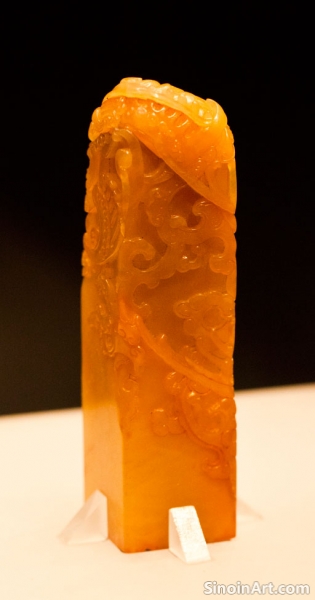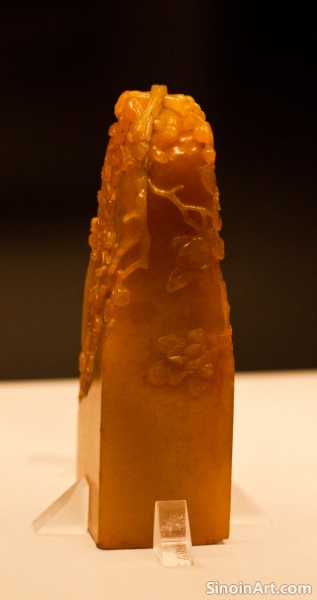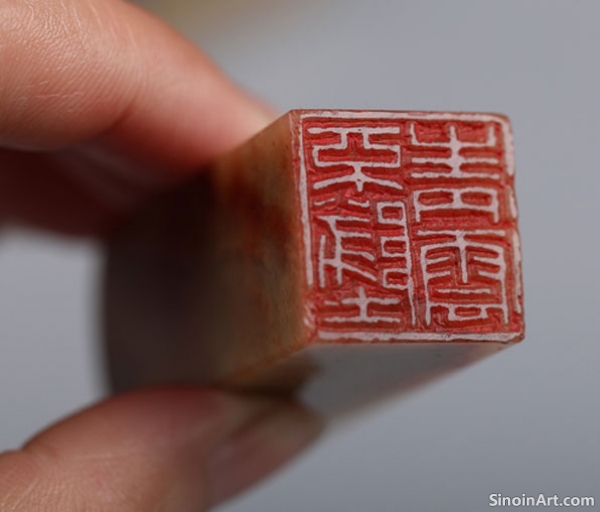The Contemporary Relevance of Seal Carving: A Living Tradition
|
While deeply rooted in ancient history, Chinese seal carving continues to be a relevant and vibrant art form in the contemporary world. Contemporary artists are not only honoring the traditional techniques and styles, but they are also experimenting with new materials, themes, and methods, ensuring that this art form remains a vital part of Chinese culture. The continued popularity of the art form speaks to its enduring quality. Contemporary artists are blending the traditional with the modern.  One of the most significant developments in contemporary seal carving is the incorporation of modern themes and subjects. While traditional seal carving often focused on characters from ancient texts, contemporary artists are now using the medium to express contemporary social commentary, abstract concepts, and personal narratives. This expansion of subject matter has allowed seal carving to engage with a wider audience.  Contemporary artists are also experimenting with new materials in seal carving, moving beyond the traditional stones to incorporate materials such as glass, metal, and even acrylics. These experiments demonstrate the adaptability and versatility of the medium. These new materials can expand the possibilities of the art form.  The rise of digital technology is also having an impact on contemporary seal carving. While traditional methods remain essential, artists are now using digital design tools, laser engraving, and other technologies to explore new possibilities. Digital tools allow for greater precision and efficiency in design. This has opened up possibilities that were not available before. The globalization of art has also had a significant impact on seal carving. As the art form gains popularity internationally, artists from diverse cultural backgrounds are now embracing it, bringing their unique perspectives and styles to the tradition. This cross-cultural exchange is enriching the artistic vocabulary of seal carving. In essence, contemporary seal carving is a dynamic and evolving art form that continues to connect the past with the present. Its ability to adapt and innovate, while remaining true to the core principles of the tradition, ensures that this ancient art form will continue to thrive and resonate with artists and audiences in China and around the globe. The art form serves as a bridge between the old and new. |
Tag : Contemporary Seal Carving, Modern Zhuanke Art, Chinese Seal, Innovative Techniques, Art Revival
Related information
- The Use of Collector's Seals in Art Authentication and Provenance Research
- Famous Collectors and Their Seal Collections: A Legacy of Connoisseurship
- Seal Carving Workshops and Courses: Learning the Ancient Craft
- The Historical Evolution of Leisure Seals: From Early Forms to Modern Interpretations
- The Role of Leisure Seals in Chinese Art and Literature
This article discusses the crucial role of collector's seals in art authentication and provenance research, exploring how these seals provide valuable information about the history of ownership and the authenticity of artworks.
This article highlights the collections of famous Chinese art collectors throughout history and their use of collector's seals, exploring the impact of their patronage and connoisseurship on the art world.
Discover the world of Chinese seal carving by enrolling in workshops or courses. Learn about techniques, materials, and design, and connect with a community of artists and enthusiasts.
This article traces the historical development of leisure seals, from their early origins to their contemporary forms, highlighting key changes in design, usage, and cultural significance.
This article explores how leisure seals are used in Chinese painting, calligraphy, and literary works, adding a personal touch, aesthetic dimension, and layer of cultural meaning to these art forms.